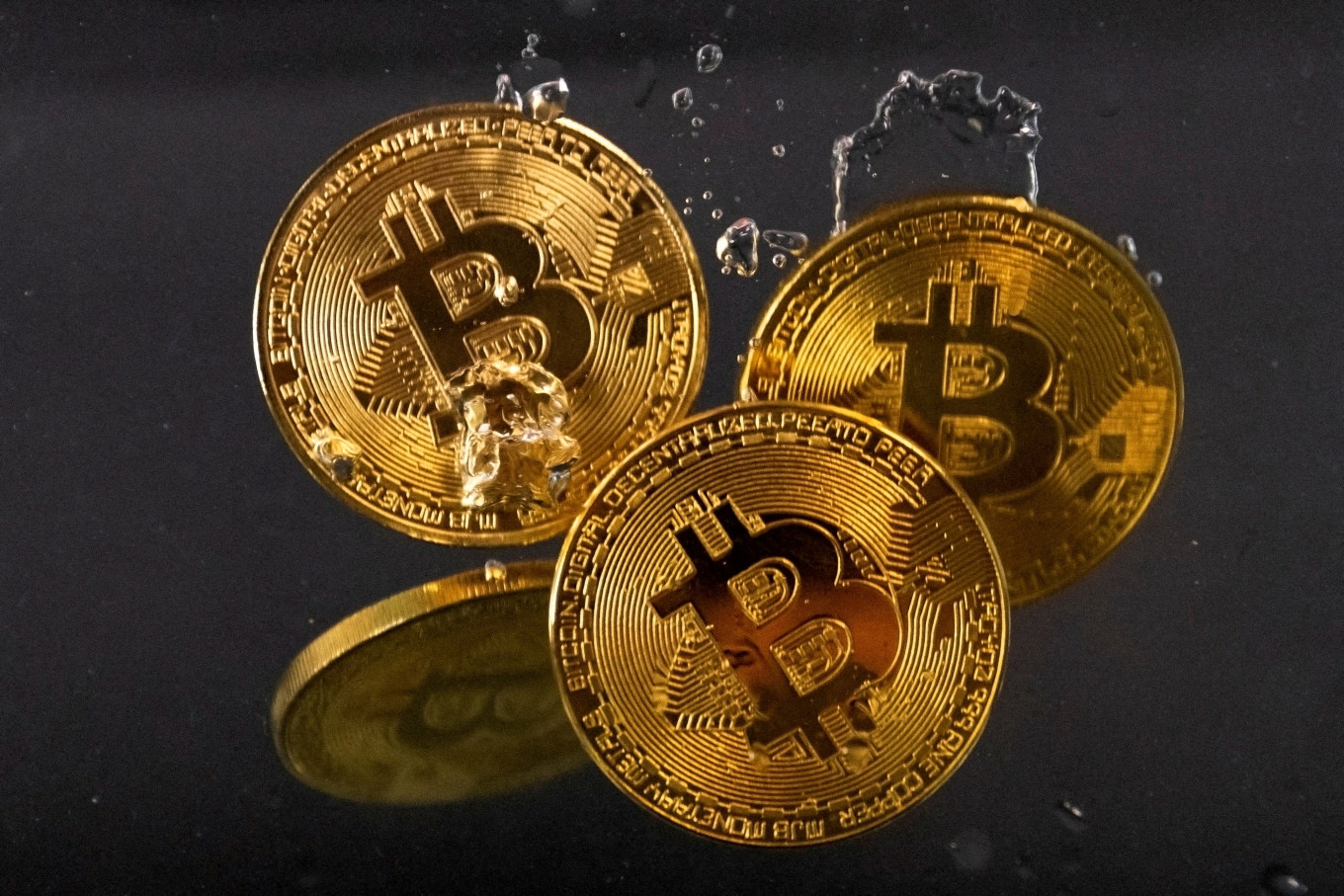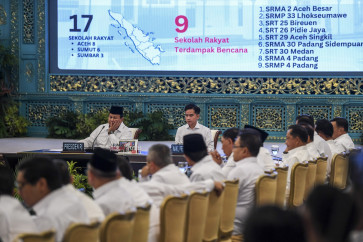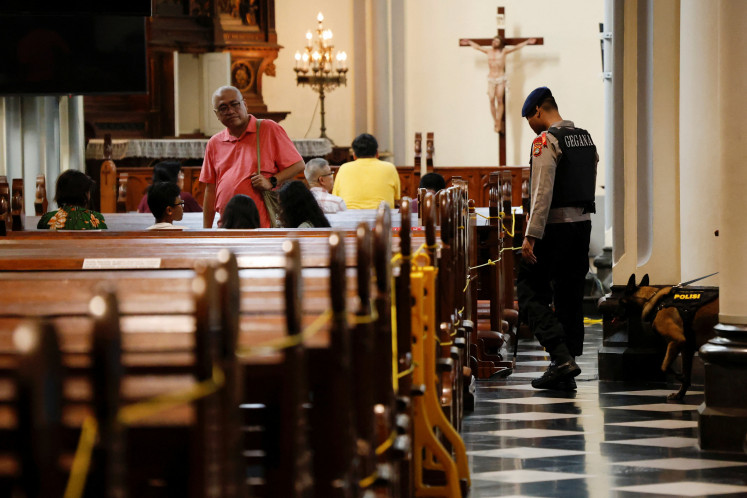Popular Reads
Top Results
Can't find what you're looking for?
View all search resultsPopular Reads
Top Results
Can't find what you're looking for?
View all search resultsG20 response to the development of crypto-assets activities
The closer people get to technology, the higher the potential growth of treacherous crypto assets and the greater risk of a society trusting them as currencies.
Change text size
Gift Premium Articles
to Anyone

During their July 2022 meeting, Group of 20 finance ministers and central bank governors reiterated that crypto assets should not have a free place without regulation. Financial authorities from the world’s 20 largest economies echo the principle of “same activity, same risk, same regulation” to embody the importance of accelerating the fencing of crypto-asset activities.
This will change the global crypto-asset regulatory and supervisory constellation in the near future.
Crypto assets have been stealing the limelight from traditional assets. Although crypto assets remain a small part of the overall assets of the global financial system, the growth of crypto-asset activity is very rapid. For instance, the market capitalization of crypto assets grew 3.5-fold in 2021 to US$2.6 trillion. In addition, institutional involvement in the crypto-asset market, both as investors and service providers, has evolved in the past two years.
If crypto assets grow significantly and their linkages with large institutions continue, this situation could have implications for global financial stability.
The most famous crypto asset is still Bitcoin, the crypto asset that was the first to steal attention. But Bitcoin is only one name of crypto assets, falling into one segment of the crypto assets. The Financial Stability Board (FSB), a G20 body that focuses on supporting global financial stability, classifies the crypto-asset market into three segments, namely unbacked crypto assets (such as Bitcoin), decentralized finance (DeFi) and so-called "stablecoins".
Of the three segments, stablecoins might be the elephant in the room, especially for authorities. In 2021, Jerome Powell, chair of the United States Federal Reserve, issued an urgent call for regulation of stablecoins — cryptocurrencies that are pegged to a reference asset, typically US dollars, to maintain a stable value and provide perceived stability — in response to stablecoins seemingly getting stronger.
The word "stable" in stablecoin is as if to indicate that the value of this segment is safe and stable, so it has the potential to meet the "currency" requirements. Shortly after Powell published the urgent call, Christian Catalini, cocreator of Diem (formerly Libra) and a research scientist at the Massachusetts Institute of Technology (MIT), said that stablecoins had the potential to play an essential role in the future of global finance. He said they could become a backbone for payments and financial services.
However, Catalini's predictions were completely wide off the mark. The world of crypto assets was sent into a spin with the collapse of stablecoin TerraUSD and its sister coin LUNA, whose prices crashed in early May. TerraUSD has been pegged almost precisely to the dollar since its release but it is now worth just over $0.03. Its sister coin, LUNA, was worth more than $80 a coin at the start of May 2022. Now, it is approximately $2 per coin. This event shows us that the stablecoins are actually "not-so-stable" coins and are still profoundly risky for consumers and the financial system. There is still an extreme gap that stablecoins are called the backbone of the payments and financial services.
When the segment considered the most stable turns out to be unstable, what about the other types considered less stable? This situation is what makes global financial regulators even more worried.
After the crash of TerraUSD and LUNA in May, US Treasury Secretary Janet Yellen asked Congress to pass "comprehensive" regulations on crypto assets, particularly in stablecoins. In the United Kingdom, the Bank of England just announced its ambitious target to introduce legislation on stablecoins by August.
On the global level, the G20 clearly states in the Chair’s Summary July 2022 that crypto assets, including so-called stablecoins, are subject to robust regulation and supervision. The G20 also supports the FSB’s works to build public awareness of the risks and its public communication on July 11, four days before the Finance Ministers and Central Bank Governors (FMCBG) meeting. The public campaign stresses the importance of implementing the principle of ‘same activity, same risk, same regulation’ to strengthen regulatory outcomes and support a level-playing field while harnessing the benefits of the innovation.
Domestically, Indonesia still holds strict regulations that the rupiah is the only legal tender in Indonesia under Law No. 7/2011. In other words, Indonesia's regulation does not recognize crypto assets as legal tender. Thus, crypto assets are not currencies.
However, the closer people get to technology, the higher the potential growth of crypto assets, including stablecoins, which are actually highly treacherous, and there is a greater risk of a society trusting them as currencies. Therefore, payment system authorities must respond to crypto assets with more robust actions.
Thus, in addition to establishing regulations on crypto assets, one crucial response is that central banks must continue to make the country's currency more efficient in line with technological developments. For example, they can make central bank money more accessible in the digital world by issuing digital tokens to complement physical cash and bank reserves, in other words, creating a central bank digital currency (CBDC).
Bank Indonesia, as the payment system authority in Indonesia, has explored a CBDC and is preparing to publish a white paper on developing a digital rupiah (CBDC Indonesia) by the end of 2022, which was announced at a G20 side event in July 2022. One of the goals of exploring the issuance of digital rupiah is to reduce the risk of digital currency that has the potential to be issued by the private sector.
Indeed, the digital rupiah needs to consider the design of a CBDC that does not disrupt monetary and financial system stability, including volatility in capital flows and runs risks in the banking industry. For reference, the issuance of the white paper is a form of communication to the public regarding the digital rupiah development plan and to obtain input from various parties.
The efforts to regulate crypto assets, including stablecoins, and introduce a CBDC could potentially minimize the risks inherent in imprudent crypto-assets activities, including financial instability. Optimistically, those attempts would ultimately promote global financial stability, a vital determinant for global economic recovery, which aligns with the Recover Together, Recover Stronger Indonesia G20 presidency’s theme.
***
The writer is an economist at the International Department of Bank Indonesia. The views expressed are his own.










